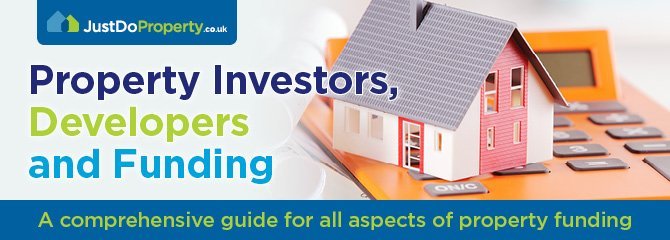
Matt Stevens is a Director at The Mortgage Genie. Here, he shares everything you need to know about buy-to-let mortgages if you’re thinking about purchasing a property to rent out.
If you would like to become a landlord but don’t have the funds to buy a new property outright, you’ll need to take out a buy-to-let mortgage. For the most part, these mortgages work just like the one you might’ve taken out to buy your own house, but there are also some key differences you need to be aware of.
To help you decide whether you should take out a buy-to-let mortgage and make choosing the best one easier, I’m going to tell you everything you need to know. I’ll cover how these loans work, whether you’re likely to be eligible for one, and what you need to consider about buying a rental property. Let’s get into it.
How do buy-to-let mortgages work?
For the most part, buy-to-let mortgages work the same as their residential counterparts: you’ll be given a loan to cover the cost of buying a new property, and will have to pay this back in monthly instalments. But, there are some ways in which they differ, and you’ll also find that there are two different types of buy-to-let mortgages to choose from.
Interest-only buy-to-let mortgages
Just like any other loan, buy-to-let mortgages have two components: the principal, which is the amount borrowed to cover the cost of the purchase, and the interest, which is a borrowing fee charged by the lender.
As the name would suggest, with a buy-to-let mortgage that’s interest-only, you will pay back the interest owed each month. Then, when the agreed term ends, you’ll have to pay back the amount you borrowed — this can be done by selling your rental property, remortgaging, or using other assets and savings to pay off the remaining debt.
Opting for an interest-only mortgage will help you to keep your monthly outgoings as low as possible, which is why they’re a particularly popular choice among property investors.
If the agreed term of your buy-to-let mortgage ends and you’re unable to pay off the remaining debt, you’ll be required to remortgage or sell up. As a result, seasoned investors will typically look to buy properties that are likely to increase in value, as this can give them the best chance of securing a profit when this happens. But, it goes without saying that the property market can be quite volatile, so there are no guarantees.
Repayment buy-to-let mortgages
If you take out a repayment mortgage, you’ll be required to pay both the interest and some of the capital with your monthly instalments. The main benefit of this is that you’ll own the property at the end of the agreed loan term, but your monthly outgoings will obviously be higher.
Repayment buy-to-let mortgages tend to be favoured by investors with one or two properties, who don’t want to have to sell up at the end of their mortgage term.
You will need to consider your investment and long-term goals to determine what kind of mortgage is going to work best for you. And, consulting a good financial adviser and mortgage broker will help you to make the right decision.
Can you change your mortgage to a buy-to-let?
There are a range of reasons why you might want to change an existing mortgage into a buy-to-let: for example, you might have a previously residential property that’s now sitting empty, or you might have decided to move and rent out your current home. You can’t rent out a property during the term of a residential mortgage, so it’s vital you contact your lender before doing this.
Some lenders will grant you “consent to let”, which means they’ll allow you to rent out your property for a set (and often short) amount of time. You may wish to do this if you’re going travelling for a few months, for example. Some lenders will also allow you to rent out your home as you wish without raising the repayment rates, but some will insist that you change to a buy-to-let agreement.
If you find that you have to switch to a buy-to-let mortgage, switching with your current provider won’t necessarily give you the most competitive rate. So, it’s best to shop around like you would when first taking out a mortgage.
Can I get a buy-to-let mortgage?
In order to take out a buy-to-let mortgage, you’ll have to satisfy certain criteria set out by the lender. Of course, a mortgage provider is always going to look at your financial situation, and consider your salary, spending, and the amount you have saved for a deposit. But, they’ll also assess the rental income your chosen property is likely to bring in.
Because buy-to-let mortgages pose a bigger risk to lenders than residential loans, their requirements are likely to be stricter. Here are just some of the factors that will be considered.
Potential rental income
You will only be able to take out a buy-to-let mortgage if the lender believes you’ll be able to make the monthly repayments. So, they will look at something known as the rent-to-interest (RTI) cover calculation (also known as an interest cover ratio, or ICR). This allows them to work out the ratio of your potential rental income to the total interest payable across the term of the mortgage you’re looking to take out. As a result, they can estimate your ability to cover the cost of the loan.
Salary
Lenders will also look at any other sources of income you have — especially if you’re a first-time buy-to-let investor. Many banks and building societies will only agree to give you a loan if you earn a minimum of £25,000, because this will help to act as a safety net if you ever find you property is empty, or your tenants are struggling to pay their rent.
Age
Many lenders have an upper age limit for buy-to-let mortgages, because they want to make sure you’ll be able to make the repayments for the full term of the loan. As a result, you will often find that you can’t get this kind of loan if you’re 75 or over, although some mortgage providers will consider applicants up to the age of 85 under certain circumstances. It’s also worth noting that a lot of lenders prefer to lend to those aged 25 and over, because younger borrowers offer present a higher level of risk.
How much you have saved for a deposit
As with a more traditional mortgage, you will be expected to pay a deposit and, because buy-to-let mortgages are often riskier for lenders, they’ll typically require a higher deposit. While the average residential deposit in the UK is around 16% of the purchase price, according to Halifax, you’ll typically have to pay a 20–40% deposit for a buy-to-let mortgage.
Of course, it’s always best to put down as big of a deposit as you can afford, as this will give you access to the best possible mortgage rates. So, while it will take longer to save a larger deposit, it’s likely to make financial sense in the long-run.
Once you’ve considered everything I’ve outlined in this article, you should be able to get a better idea of whether getting a buy-to-let mortgage is right for you, and how you can choose the right option if you do decide to go down this route. If you get it right, buying a property to rent out can be a fantastic investment, so I wish you the best of luck!
- Homebuilding and Renovating Show Free Tickets - March 19, 2024
- From Fixer-Upper to Dream Home: Investing Returns in Your Property Journey - March 13, 2024
- Leaving on a High Note: Acing Your End of Tenancy Clean - March 13, 2024



